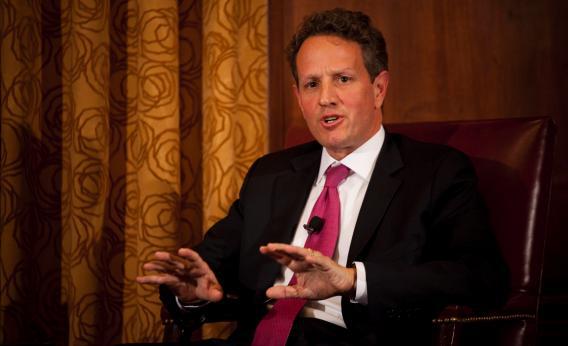Back in December of 2007, Tim Geithner was President of the New York Federal Reserve Bank and Vice Chairman of the FOMC and worried a bit about the prospects of a looming credit crunch. Stockton is the Fed’s head of research:
VICE CHAIRMAN GEITHNER. May I ask one follow-up question? In the note for the Board that you circulated on Monday, Dave, you said that the magnitude of the credit crunch you’re contemplating is roughly comparable to the unusual weakness of private spending seen during the headwinds episode of the early 1990s. So I was curious. It is sort of interesting because you think that capital at banks going into this period ismuch stronger than going into the 1990–91 period. Corporate balance sheets, based just on the crude leverage ratios, are much healthiertoday than they were then. On the other hand, banks are a smaller share of the financial system, and you could say that the nonbank part looks kind of weak. The FHLB is growing very dramatically, taking up a fair amount of the room left by the shrinking of the nonbank sector. I don’t know. GSEs have less room to grow. It’s sort of mixed. It’s complicated. I was curious about how you thought about the comparison. You didn’t seem to like the comparison.
MR. STOCKTON. So the headwinds of the 1990–91 period—that was a calibration we used for the “credit crunch” scenario in the Greenbook.
VICE CHAIRMAN GEITHNER. Oh, it’s just the alternative scenario. I misunderstood. I’m sorry.
This isn’t a Yoda-like level of prescience or anything, but it does show that Geithner had at least one eye on the crucial issue of the growth of the “non-bank” elements of the financial system (“shadow banking” in today’s parlance) and its vulnerability to problems. Later he goes on to describe the risk of “a deep and protracted recession driven as much by financial headwinds as by other fundamentals” and argues that “we need to set policy in a way that reduces the probability of the latter, the more adverse scenario.”
